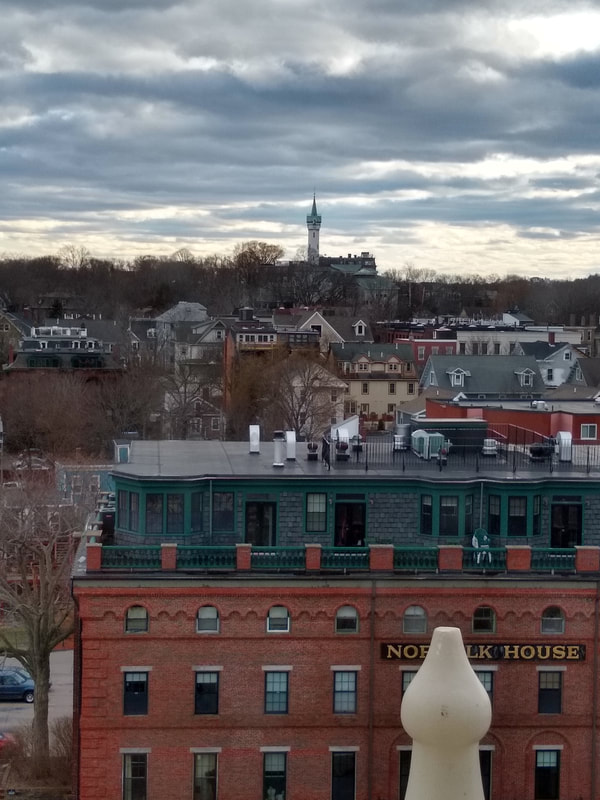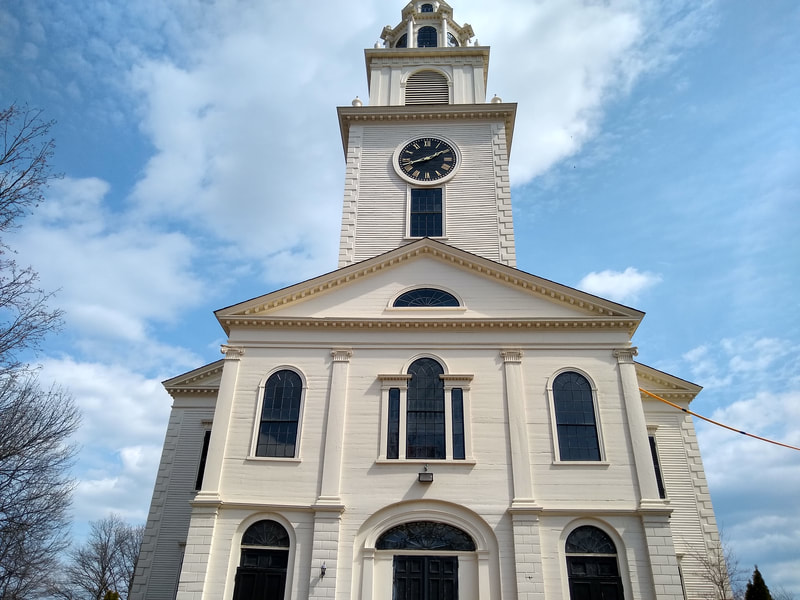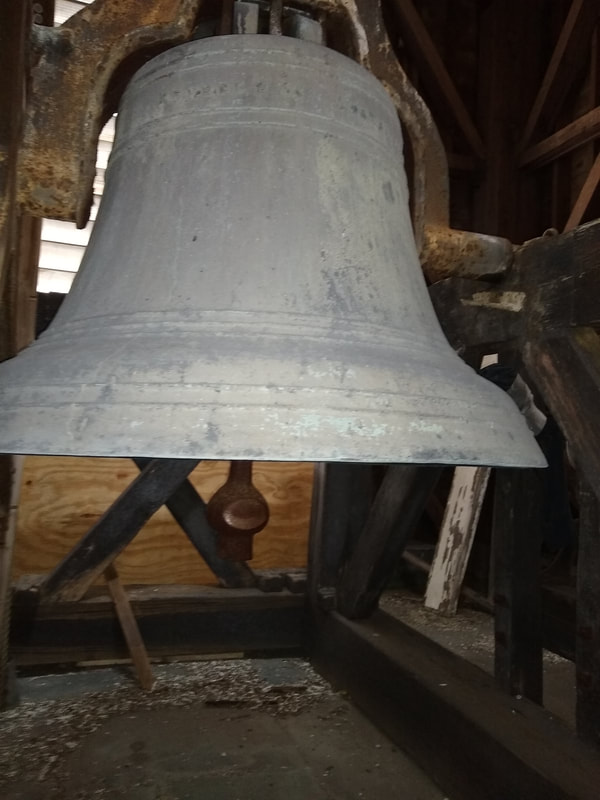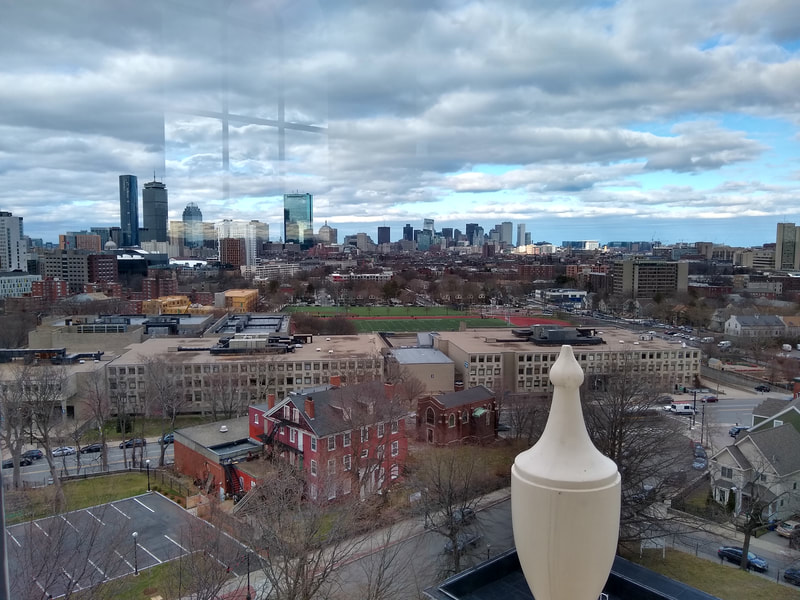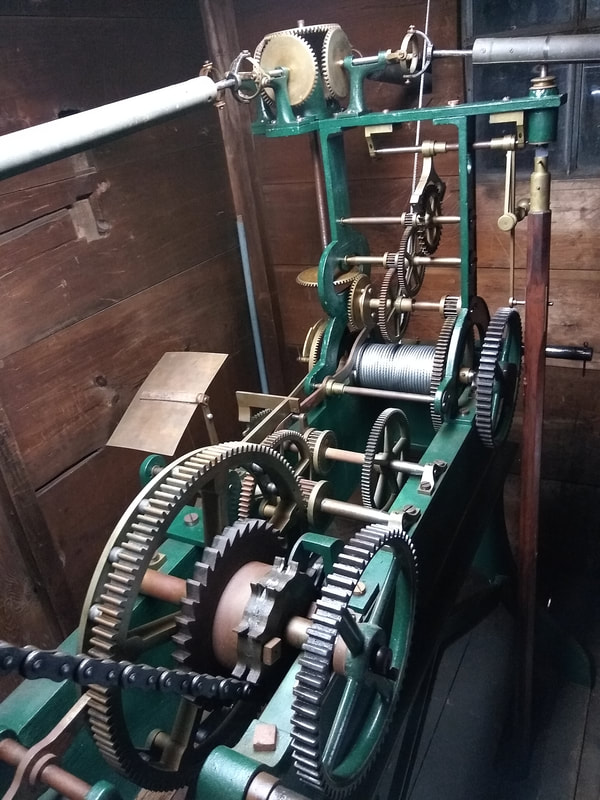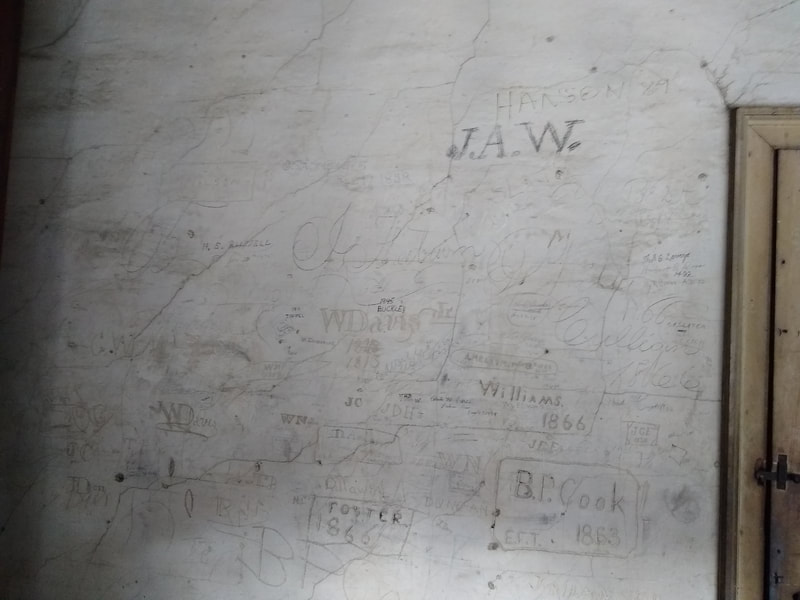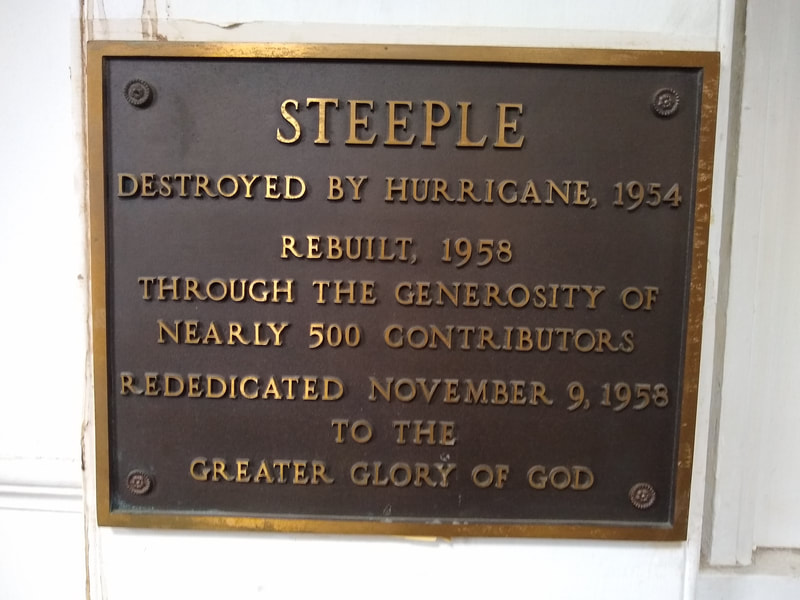The Revere Bell in the First Church of Roxbury; Today The Universalist Urban Mission
A Church with a Long History of Determination, Endurance and Resourcefulness
The handwritten notes in the first image below the video of the bell is likely Joseph Warren Revere, Paul Revere's eleventh born. {1} Paul and sons kept church bell records in a ledger called the waste book. The bell entry shows the weight as 1,538 pounds. The second weight referenced is for the tongue. We are not certain of the description provided. Today, the Roxbury bell, has both a tongue and a hammer. Further, confusing us is the musical key of the bell as struck. Large bells are often key of C and smaller bell's key of G. Could this second entry note the bell's key?
We do not have a musical ear. If you have some knowledge of music, can you compare the sound of the Roxbury bell below with the sound of the King's Chapel bell at this link and make a judgment call? Both audios can be played simultaneously for comparison purposes. We would appreciate any suggestions from those that know or have a musical ear.
We continue with a brief history of the church and its several bells.
The first church members arrived in Roxbury as freemen in 1630 under a land grant (if they paid their passage) and established the First Church of Roxbury in 1632. John Elliot, often referred to as Apostle Elliot, was listed as "teacher" in the church records. Elliot focused mainly on Native Americans. His various conversion efforts created Natick, initially called a praying town in 1651 and incorporated officially in 1781. John Elliot's efforts to convert King Phillip and his brother to Christianity failed in 1675. Chronologically, the King Philip's War followed with disastrous results for New England and their Indian adversaries.
The bell purchased in 1755, was replaced in 1762, as it was considered no longer fit for use. The old bell, in pieces, weighed 280 pounds and was sent to Abel Rudhill in Gloucester, England for re-manufacturing. Abel's family business began in 1684 and produced 5,000 bells before folding in bankruptcy. Abel's grandfather turned bell making on its side by using a lathe rather than chisel and hammer to tune church bells. Abel and family, in 1744 produced the current eight bells that ring routinely in the Old North Church in the North End of Boston, Massachusetts. In 1750, the contract to ring the bells routinely and on special occasions was let to Paul Revere, at age thirteen.
In 1680, the contract to ring the First Roxbury bell and sweep the meeting house was worth three pounds. Bell ringing would include calls to pray, calls to fires and the death of residents. The first sexton to own the contract was William Cleaves, abruptly terminated by his death in the King Philip's War at the Sudbury fight. He was succeeded by his widow. In time, a Willard clock would be added to automatically ring the bell every hour. A replica of this clock works the bell today, and the original Willard clock resides at the Willard House and Clock Museum, in North Grafton, Massachusetts. Simon Willard maintained the First Church of Roxbury's clock at least through 1818.
In 1775, the church grounds served as a bivouac for General John Thomas and his regiments. George Washington inspected the troops before the British evacuated Boston. It is rumored, of course, that he slept at Dillard-Thomas House, the yellow colonial imaged below. The Dillard-Thomas House served as military headquarters and was a stop along the way for the cannons transported by Henry Knox on the way to Dorchester Heights. Thomas was a doctor with significant military experience. He died of smallpox in 1776 during a failed attempt to conquer Quebec City. Today his home is a State Park.
The First Church of Roxbury's first Revere Bell may have been 862 pounds and installed in 1798. The second Revere bell was raised to the steeple May 27, 1819. It weighs 1,538 pounds including a 32-pound tongue. A hammer is present today in the steeple to strike the bell at its resting place and a rope for unscheduled occurrences can be exercised from the lower levels. The gross cost of the bell was $692.10, with a deduction of $215.50 for the metal that was remanufactured from the previous bell. The final cost was $476.60.{2}
To date, the First Church of Roxbury has rebuilt its facilities five times since 1632. It has survived fires, hurricanes, vandalism, and a shell or two from the British Navy. The resurrection of each of the first four churches culminating in the fifth and most spatial of all has much to do with the current guardians and their humble ancestors. Simon Willard the clockmaker, William Dawes the Son of Liberty and revolutionary hero, John Elliot the "Teacher," Hook and Hastings the parishioners and organ maker, The Abolitionist, Theodore Parker (perennial guest) and the employees of the current urban mission, have maintained the growth and leadership of this church through four centuries. The longevity and conservancy of the Revere Bell seem assured.
We do not have a musical ear. If you have some knowledge of music, can you compare the sound of the Roxbury bell below with the sound of the King's Chapel bell at this link and make a judgment call? Both audios can be played simultaneously for comparison purposes. We would appreciate any suggestions from those that know or have a musical ear.
We continue with a brief history of the church and its several bells.
The first church members arrived in Roxbury as freemen in 1630 under a land grant (if they paid their passage) and established the First Church of Roxbury in 1632. John Elliot, often referred to as Apostle Elliot, was listed as "teacher" in the church records. Elliot focused mainly on Native Americans. His various conversion efforts created Natick, initially called a praying town in 1651 and incorporated officially in 1781. John Elliot's efforts to convert King Phillip and his brother to Christianity failed in 1675. Chronologically, the King Philip's War followed with disastrous results for New England and their Indian adversaries.
The bell purchased in 1755, was replaced in 1762, as it was considered no longer fit for use. The old bell, in pieces, weighed 280 pounds and was sent to Abel Rudhill in Gloucester, England for re-manufacturing. Abel's family business began in 1684 and produced 5,000 bells before folding in bankruptcy. Abel's grandfather turned bell making on its side by using a lathe rather than chisel and hammer to tune church bells. Abel and family, in 1744 produced the current eight bells that ring routinely in the Old North Church in the North End of Boston, Massachusetts. In 1750, the contract to ring the bells routinely and on special occasions was let to Paul Revere, at age thirteen.
In 1680, the contract to ring the First Roxbury bell and sweep the meeting house was worth three pounds. Bell ringing would include calls to pray, calls to fires and the death of residents. The first sexton to own the contract was William Cleaves, abruptly terminated by his death in the King Philip's War at the Sudbury fight. He was succeeded by his widow. In time, a Willard clock would be added to automatically ring the bell every hour. A replica of this clock works the bell today, and the original Willard clock resides at the Willard House and Clock Museum, in North Grafton, Massachusetts. Simon Willard maintained the First Church of Roxbury's clock at least through 1818.
In 1775, the church grounds served as a bivouac for General John Thomas and his regiments. George Washington inspected the troops before the British evacuated Boston. It is rumored, of course, that he slept at Dillard-Thomas House, the yellow colonial imaged below. The Dillard-Thomas House served as military headquarters and was a stop along the way for the cannons transported by Henry Knox on the way to Dorchester Heights. Thomas was a doctor with significant military experience. He died of smallpox in 1776 during a failed attempt to conquer Quebec City. Today his home is a State Park.
The First Church of Roxbury's first Revere Bell may have been 862 pounds and installed in 1798. The second Revere bell was raised to the steeple May 27, 1819. It weighs 1,538 pounds including a 32-pound tongue. A hammer is present today in the steeple to strike the bell at its resting place and a rope for unscheduled occurrences can be exercised from the lower levels. The gross cost of the bell was $692.10, with a deduction of $215.50 for the metal that was remanufactured from the previous bell. The final cost was $476.60.{2}
To date, the First Church of Roxbury has rebuilt its facilities five times since 1632. It has survived fires, hurricanes, vandalism, and a shell or two from the British Navy. The resurrection of each of the first four churches culminating in the fifth and most spatial of all has much to do with the current guardians and their humble ancestors. Simon Willard the clockmaker, William Dawes the Son of Liberty and revolutionary hero, John Elliot the "Teacher," Hook and Hastings the parishioners and organ maker, The Abolitionist, Theodore Parker (perennial guest) and the employees of the current urban mission, have maintained the growth and leadership of this church through four centuries. The longevity and conservancy of the Revere Bell seem assured.
Run your mouse over the image and double click to expand
{1} Massachusetts Historial Society Microfilm, the Revere reels.
{2} "history of the First Church in Roxbury,Massachusetts, 1630-1904"
by Walter Eliot Thwing ; with an introduction by James De Normandie
Thwing, Walter Eliot, 1848- W. A. Butterfield, 58 Bromfield St. Boston Ma., 1908
Available at BROOKLINE/Special (B.R. 289.8 F5)
{2} "history of the First Church in Roxbury,Massachusetts, 1630-1904"
by Walter Eliot Thwing ; with an introduction by James De Normandie
Thwing, Walter Eliot, 1848- W. A. Butterfield, 58 Bromfield St. Boston Ma., 1908
Available at BROOKLINE/Special (B.R. 289.8 F5)


